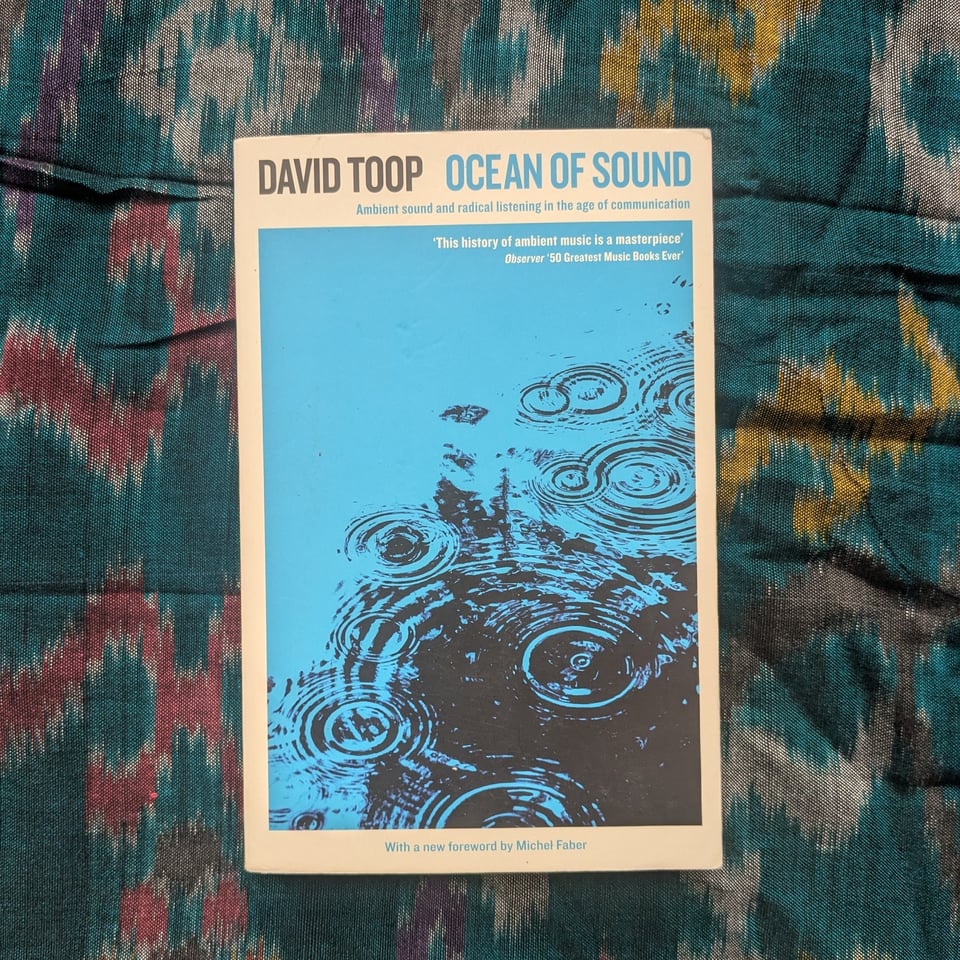
Hello subscribers and sorry for the long wait. In a way that should surprise absolutely nobody, I have been busy and it has meant that I have a series of book reviews backed up waiting to be written and shared. This is largely because my life swings violently from extreme busy-ness to total relaxation, with very little grey area in between. My work is quite intense (sometimes triple booked calendar all day long, long hours and barely a lunch break) and when I’m on holiday I like to completely disconnect. The good news is I really love reading on holidays and recently went to Bali, so I have a lot to tell you about.
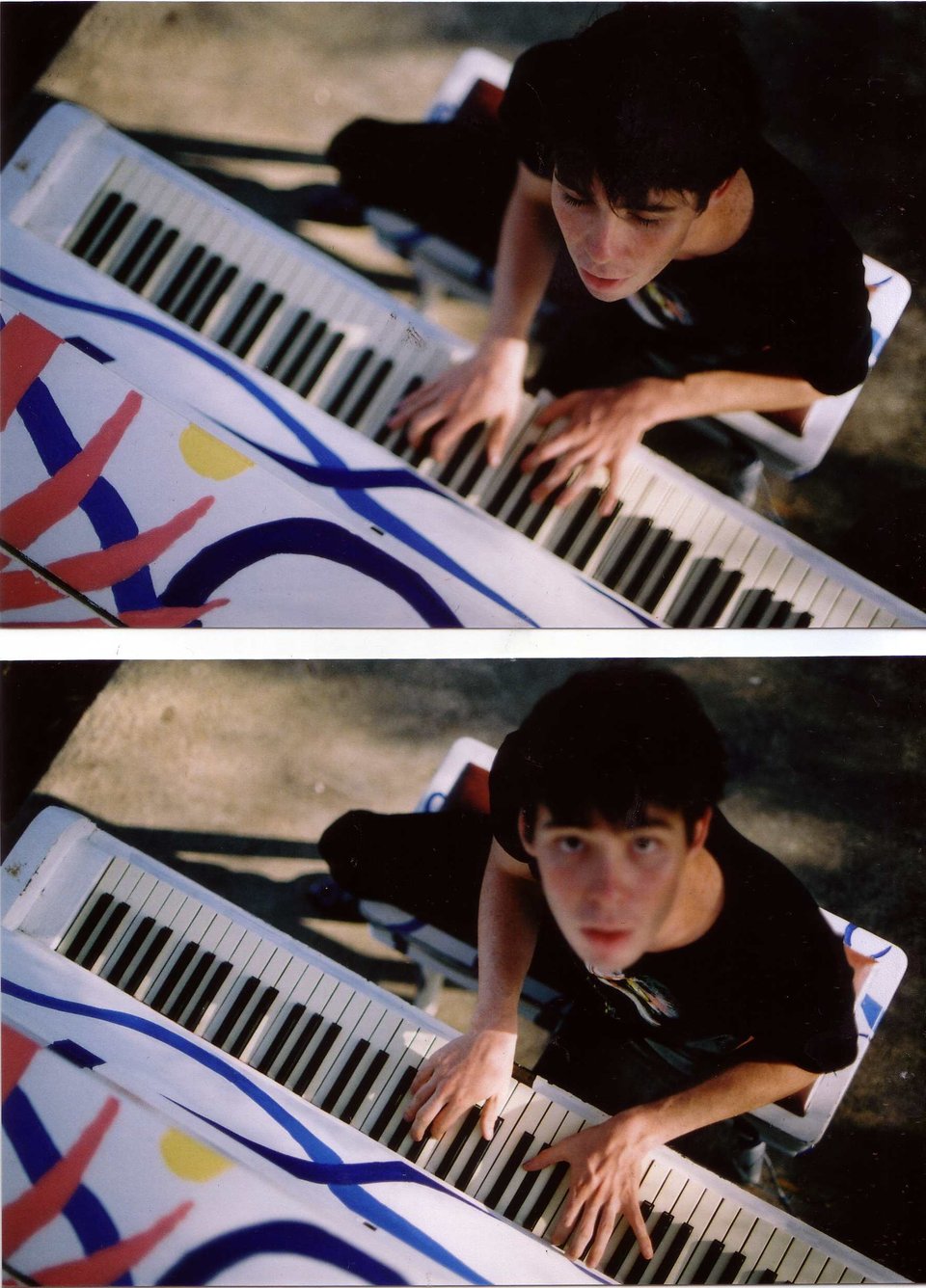
One thing that perhaps is a caveat to the above description of my life is that I have taken up a new hobby. Since my friend Jack passed last year, I’ve been thinking a lot about music. He and I bonded deeply over music when we met almost 20 years ago. We wrote music together, DJ’d together, went to SO many gigs together and I even played in his band for a bit (flute, harmonium and backup vocals!). Since I’ve become a full time wage slave (see above) I’ve felt increasingly alienated from music. My first ever job was being a music journalist, and I taught flute for a few years.
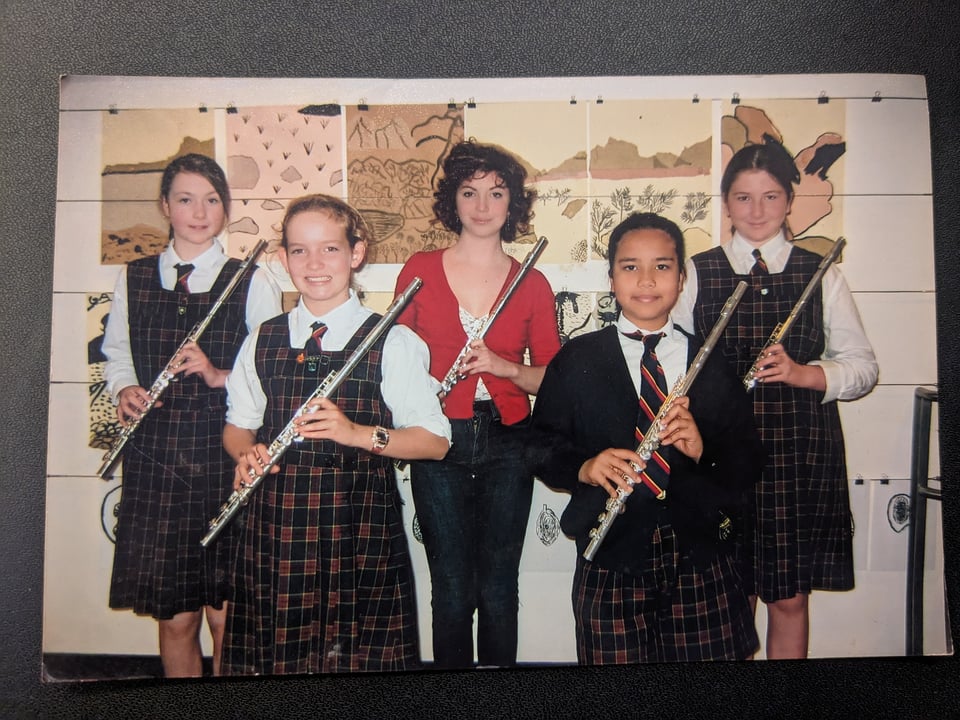
Now I work in tech. The money is good, and there are parts of the job that I really love (design, for example, still is very interesting to me) but I miss the frisson of music, which used to play a much bigger part of my life.
Last year I joined a choir, after I realized via karaoke that singing songs together was a good feeling that I wanted more of in my life. I’m not an amazing singer, but I can sing in tune and I can sight sing. After spending 9 months (ish) rehearsing weekly, I performed on stage with them in December at Hamer Hall, which was a really fun experience. Somewhat bittersweet, because Jack was a choirmaster, and his choir performed at his memorial, and his love of choir was a huge part of why I joined Melbourne Indie Voices. But I like to think that this is part of him that lives on in me.
I got a swan tattoo for him this year, too. He loved swans, and I thought this one seemed particularly magnificent, as he was.
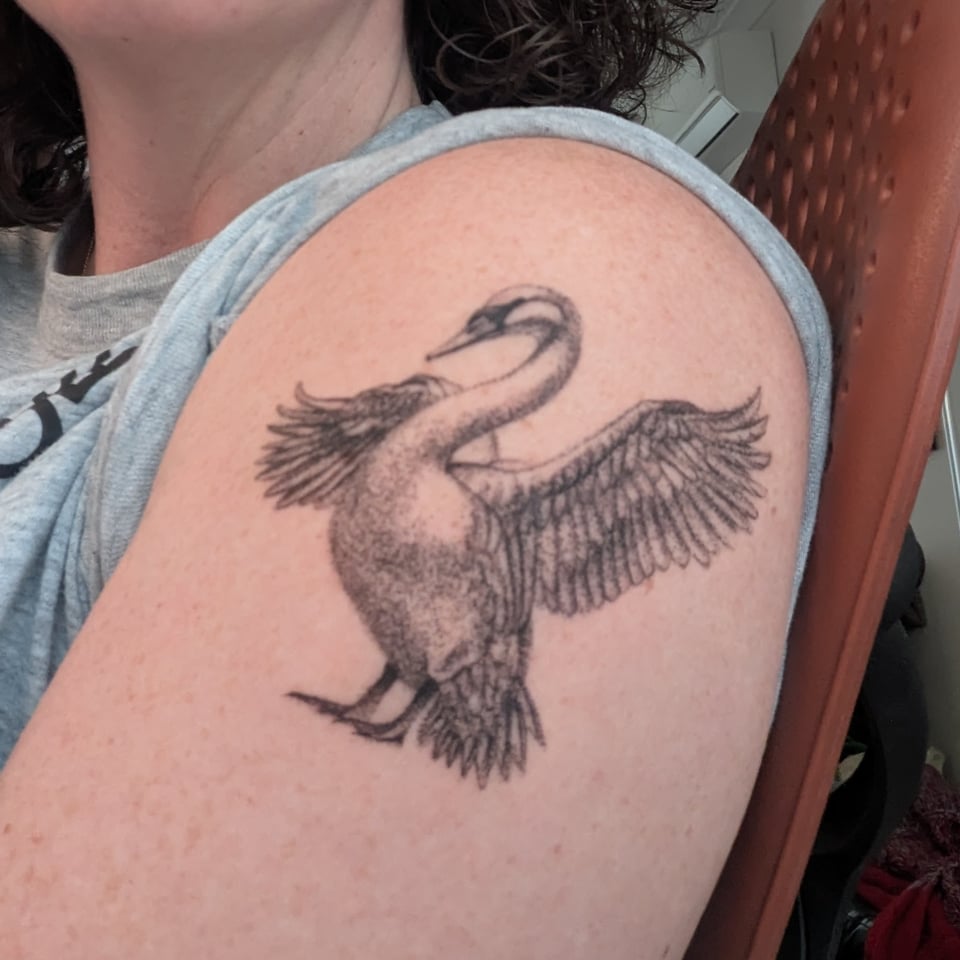
Anyway, last year, we went to stay in a little cabin in the Victorian countryside, just as the summer was coming around.
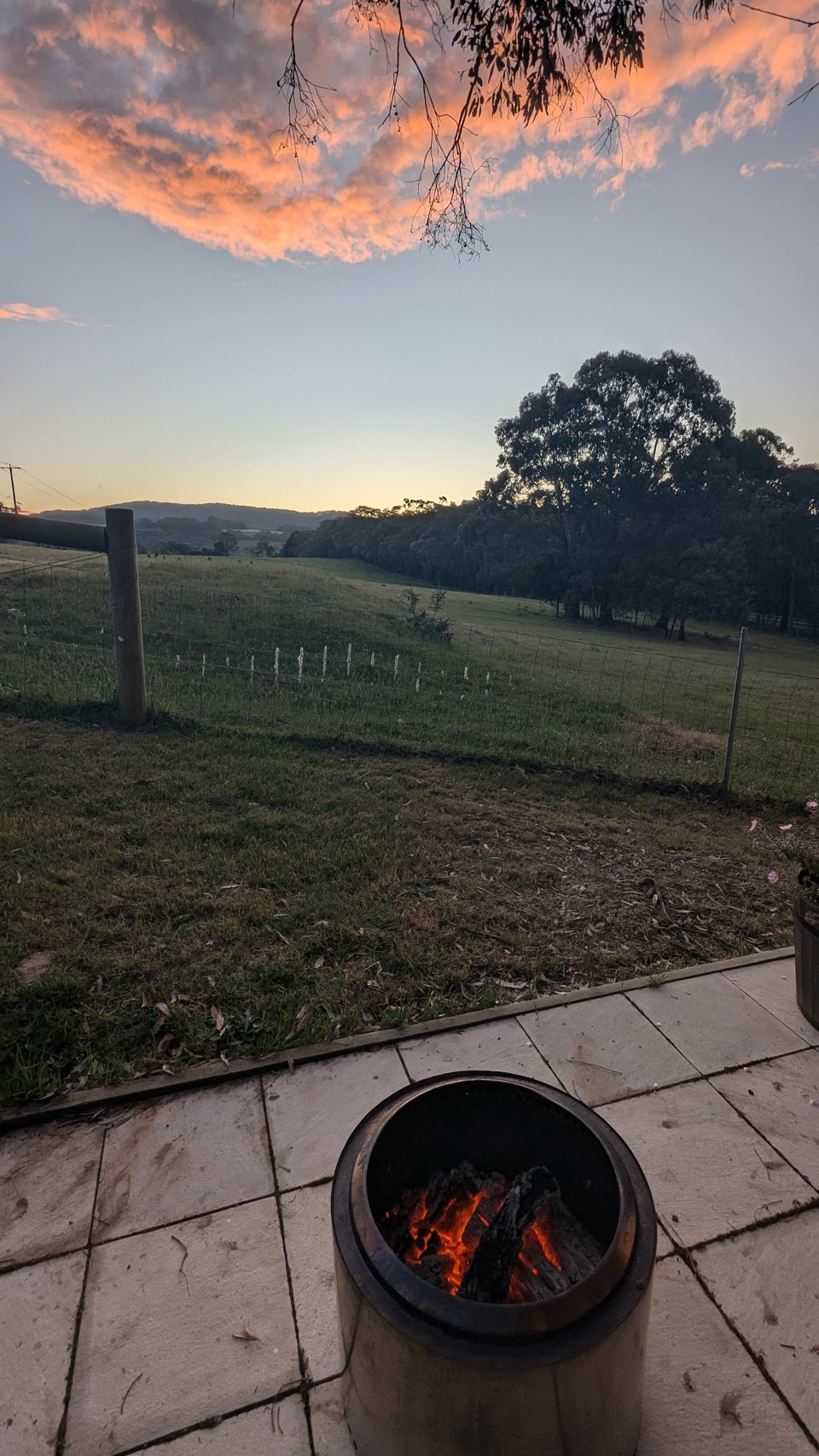
It was still cool enough to have the fire pit on, and there were kangaroos and echidnas hanging around for us to meet. I was reading Underground Lovers, and thinking about mushrooms a lot, which had reminded me of Merlin Sheldrake connecting some fungi to synths and listening to the electrical signals they were making.
I was also thinking a lot about frogs. Near to my house, there’s a park that has a pond that is full of banjo frogs, and I’ve been thinking about recording them for a while. I don’t know why, but part of me just loves their funny little bonk noises, and I have become the kind of person who is quite delighted by the sounds of nature.
Reflecting on my past life with music and reading about fungi, something kind of fell into place in my mind and I realized, perhaps I should learn about… synthesizers. Having learned piano to a high level, I’m very comfortable on keys, but interestingly, I’ve never really learned much about synths. I have a Korg SV2, which was a very generous and kind gift from my partner, that I have played on and off, but honestly playing on my own has never really tickled me in the way I have found music does when I play or sing with others. Learning music is fun, and playing is fun, but it’s not the kind of thing that I found myself coming back to as much as I needed to to be good at it.
It’s kind of weird that despite liking electronic music quite a lot, knowing how to play the piano, being able to read and write music, and even having done some rudimentary music production stuff in high school, I’ve never really understood much about synths?
And so I started thinking about what might be a good way to learn. I watched a bunch of YouTube videos and very quickly fell down a rabbit hole where I realized that this was a whole world filled with possibilities, creativity, experimentation, history and fun.
An Arturia Microfreak quickly appeared, shortly followed by a Polyend Play, which I then bought a Hologram Microcosm for. I have a bit of fun with them, not necessarily making songs, but certainly going in to flow, learning, trying things, making sounds that make my brain feel good, and using my little home office for something other than work. It’s brought the SV2 back to life, as a midi controller, and on a rainy weekend, I can often be found in a happy beep boop bubble.
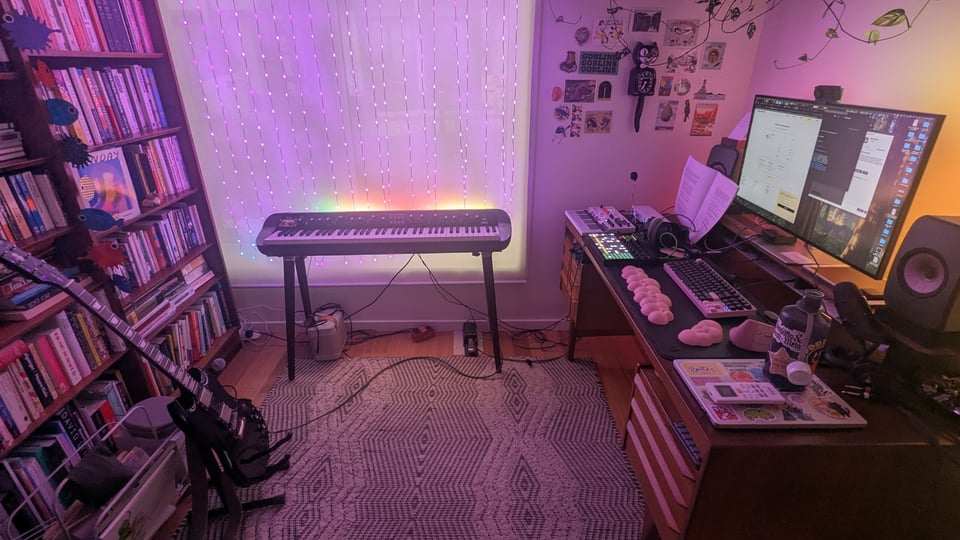
But there’s SO much to learn about electronic music production, and I am the kind of nerd who likes to learn stuff properly, so I went to a session at Melbourne Electronic Sound Studio where I was deeply entranced by a bunker absolutely filled with a huge variety of devices, including Moog, Buchla and Eurorack modular synths, historical niche pieces, a huge array of pedals, many drum machines, a fucking Fairlight and a very, very patient and kind teacher who spent 1.5 hours teaching me and three men about ADSR and the basics of substractive synthesis and then facilitated 1.5 hours of free play on the collection.
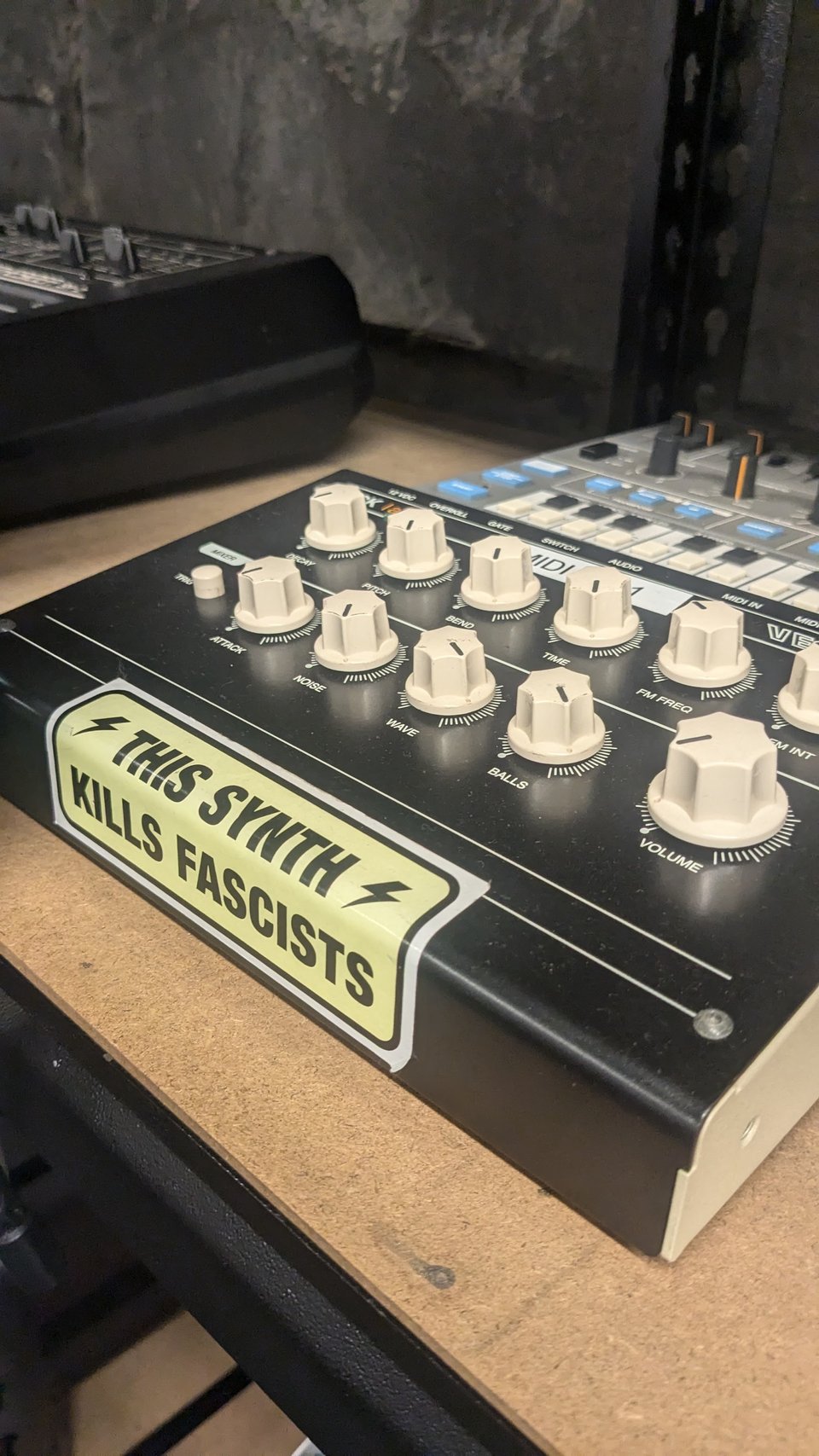
MESS is largely comprised of Gotye’s private collection, which is very cool, especially as the membership at MESS enables you to book sessions to use any of the devices.
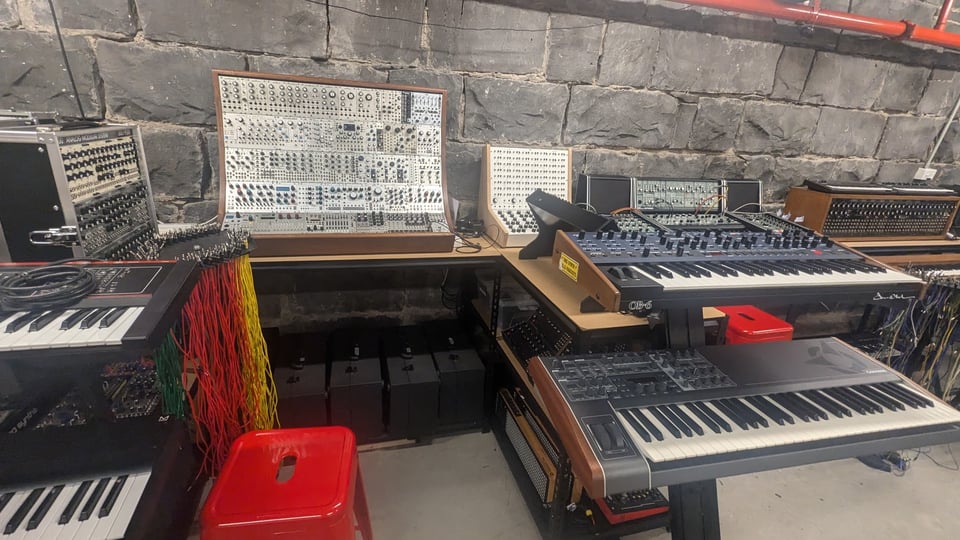
Wow, Milly, are you going to review a book?
Look buddy, this is my stupid blog, and I’ll tell my long winded stories the way I want to, OK? Let’s talk about the boo-
Haha just kidding. So, this year I decided to get off social media (I am still very happy about this decision. I no longer think about Instagram and I think that is healthy) and I also decided to get off a bunch of streaming services. It’s patently absurd to be paying for Netflix and Disney and Binge and Stan and Prime and ParamountPlus and to find that somehow you get to the night you want to watch something and you’re stuck scrolling looking for something that is remotely good. Each of those services costs about $20 a month and frankly, I hit a breaking point after watching Carry On in December and then reading Will Tavlin’s essay about it in n+1.
These streaming services are becoming factories to pump out slop, probably very soon to become AI slop, to entertain people while they are probably looking at their small screen in addition to their big screen.
That is not how I think about cinema. I am a fucking snob, obviously, but I really like film; I studied it in university and I have cared a lot about the moving experiences I have had from art, film, books and music for my entire life. So to have found myself wasting hours of my life on some made-to-be-watched-in-the-background lowest common denominator slop rather than watching one of the literally thousands of films I’ve been meaning to watch was enough to add all TV/movie streaming services to the pile as I was killing off my X, Instagram and Facebook accounts.
I have not yet figured out how to get off Spotify. For now, I’ve stopped listening to the daylists and other “made for you” algorithmically generated playlists which seem to just feed me slop meant for a shallow version of my taste, artificially boxed in and increasingly typecast in ways I do not appreciate. I listen to albums and I make playlists of my favourite songs, and I listen to the playlists my friends have made, and that is, so far, working for me. I am very glad to not have to listen to Troye Sivan or Sabrina Carpenter every second song which seems inevitable if you hand over the control to Spotify (more on this later).
Because my partner is smart and likes doing home technology things, he set us up with a streaming setup connected to a NAS where we could put films. From the internet. I will not give exact details but the important thing is we can decide on what to watch, and then put it on the drive, and then watch it when we want. This is a similar, but notably different workflow to “sit on the couch and turn on the TV and see what is being promoted to us by Netflix”. It is specifically more intentional and means we have a much higher chance of feeling like we have spent our (finite) time watching something good, as opposed to wasting it on something we are ultimately disappointed, if not enraged by.
So, I have been meaning to watch Under The Skin, because I like that kind of thing. I saw The Zone Of Interest last year and it was probably the best film I saw that year. Deeply disturbing, with a soundtrack that I was thinking about for many days after, and a powerful sense of unease created by not over-explaining every plot detail to the audience. I am, more than almost anything, very maddened by forced exposition in films, which I find condescending and frustrating, and this was the opposite of that. Not to say I found it confusing, but I found it beautifully, carefully evocative, without being patronizingly explicit.
Milly, are we still doing book reviews, or…?
So, Jonathan Glazer has made other films, which seemed like something I would enjoy. We watched Sexy Beast (excellent, hilarious, strange) and we queued up Under The Skin. I won’t write too much more about it (lol, I promise… or…), but it is a cold, dark story about an alien, who is played by Scarlett Johansson. I liked it a lot. It’s based on a book by Michel Faber, which is apparently quite different in terms of the plot. The book is actually about two aliens, who appear on earth as a heterosexual human couple, who are running a kind of farm. Glazer set out to make this movie, and apparently even cast Brad Pitt as the other aliens, but made a decision half way through filming to shift the story. He removed Pitt, and took all the scenes that had been shot with Johansson, then adjusted the story.
Interestingly, part of why the film is so unique is because the interactions that Johansson has with the men she meets on the streets of Glasgow while driving her van are very realistic. This is because the men are actual non-actors, civilians who were approached by a dark-haired, underdressed Johansson in a van at like 3am on a cold night in Glasgow. Most of them had no idea it was such a well-known actor, and responded as such, with a little surprise, interest and curiosity. They were all eventually told about the film, and later scenes (which require a bit of acting) were filmed with their consent of course.
It was curiously coincidental then that the foreword of Ocean of Sound was written by Michel Faber. (On a local website he is listed as co-author). Faber is clearly a music fiend and polymath, writing his own book about music at the time of writing the foreword. The forward touches on the philosophical nature of the book, and effectively sets the expectations of what you’re about to experience, which is sort of part philosophy, part memoir, part historical and part poetry. Like Under The Skin, Ocean of Sound is dreamlike, strange, intriguing and at times, opaque, but offers many opportunities for the curious to follow threads and discover.
Toop is a musician himself, and from what I can tell, a prolific one. It also seems like he’s a personal friend of Brian Eno, who features heavily in this book. Ocean of Sound loosely traces the development of ambient music in a non-linear fashion, which in many ways is a spiritually true reflection of the way the form has developed. Technological developments (like inventing telephone carrier multiplexing, which set off the invention of Muzak, or the synthesiser, which started electronic music in earnest), travel and cultural exposure (of Debussy to gamelan in Indonesia, for example), parallel invention (Moog and Buchla) and individual artists (Eno, Sun Ra, John Cage, Satie, Debussy) all form part of the story here, interspersed with recounts of dreams, memories and interviews.
Some of the interesting bits that have stayed with me include Eno’s philosophy of “background music” vs “foreground music”; the influence of non-Western music including microtonal Buddhist chanting and Javanese scales; the critical role of physical space and venues in the development of certain scenes; the story of how Eno was holed up with a broken leg and couldn’t reach his record player and discovered listening to the world around him.
Rindik music I recorded at the Tandjung Sari hotel on my recent trip to Sanur, Bali
Perhaps one of the most important things this book did for me is help me understand the question that set me off on this journey: after undertaking a formal music education (I didn’t go to the con, but I studied two instruments through AMEB and did music as a formal subject at my school, played in multiple orchestras and jazz bands) why was I just now learning what a synthesiser is? Why wasn’t it considered a critical part of music education in the 2000s, as the instrument that essentially completely transformed musical development? We studied John Cage and Phillip Glass and Steve Reich, and in art we studied Nam June Paik and Marcel Duchamp and Joseph Beuys and Bill Viola and yet… we did not learn about how samplers work, or reel to reel tape recorders, or Moog synths. Why? What’s the purpose of leaving the most recent part of the history of the form untaught?
Understanding now the truly heterodox nature of jazz, hip hop, electronic music, ambient music, and experimental music has made this make a bit more sense for me. You could say the rebellious, experimental side of music perhaps has always been there, but the speed of development and the non-linear nature of how this artform came about probably makes it less than practical to teach to teenagers, due to its messy, non-linear nature, its lack of formality and its democratisation. De La Soul is not considered a high art in the way that Mozart is, right?
But what is high art and low art, other than a thin veil on class politics through the gauzy lens of history? Part of what I loved about this book was its complete disinterest in the high/low distinction, swimming in and out of different eras, styles and cities effortlessly. Yes, it’s fascinating that Debussy’s travels to Indonesia helped inform the development of Impressionism, but it’s equally interesting that Richard James (Aphex Twin) uses lucid dreaming to generate song ideas, and that he once played two sanding discs as records at a show in Islington.
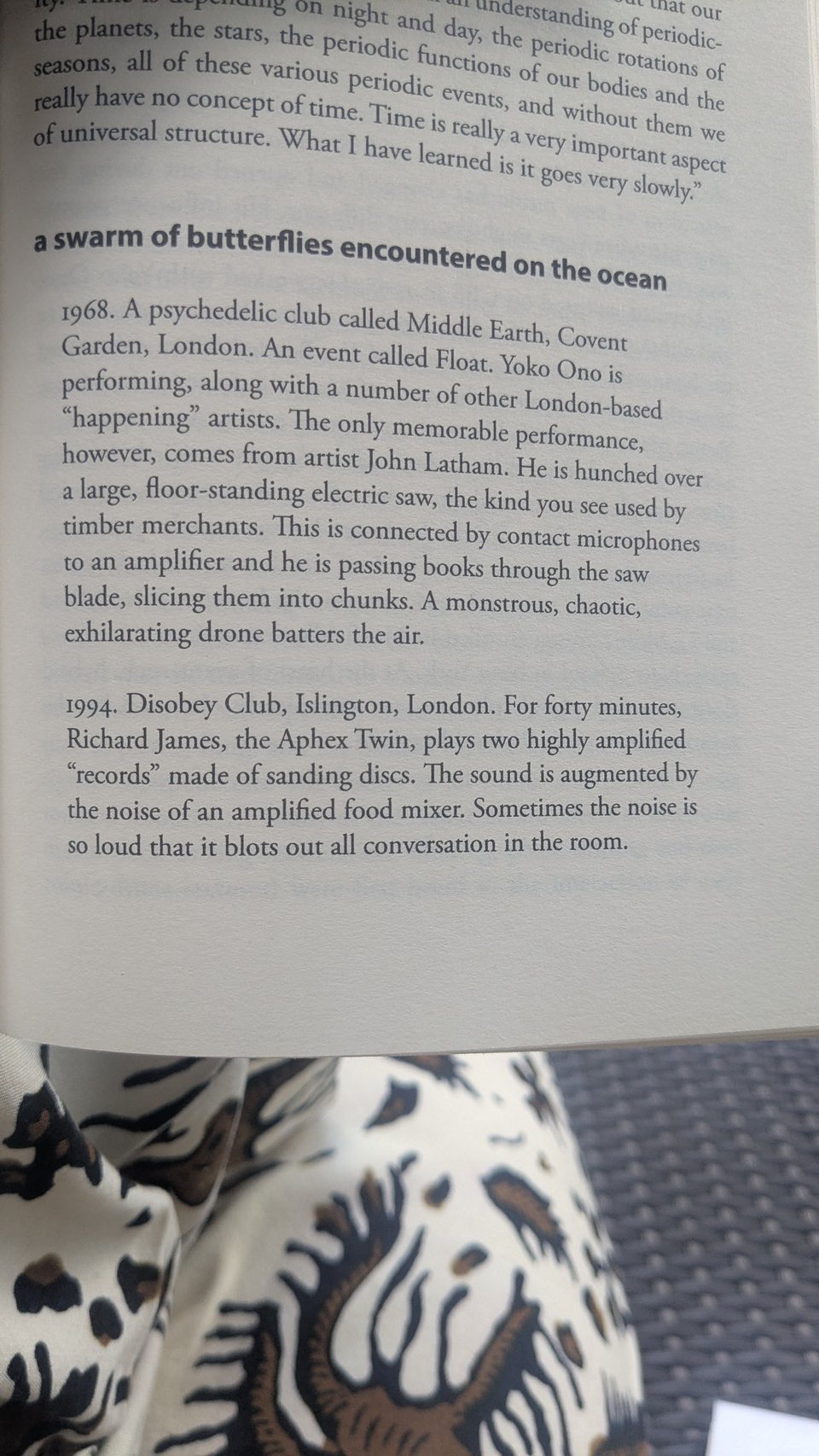
Music is fucking wild. People have used this artform to explore the limitations of human attention; to discover the boundaries of what “sounds like music” and then again for what elicits an emotional response; to transcribe their dreams; to drive political movements; to develop philosophies around the nature of chaos and chance; to entreat listeners to connect more to the world around them just by changing the way they listen. No matter what you listen to today, it was informed by people who did this kind of thing, who made the sound of a saw wave and a low pass filter into a sound you readily accept as music, despite it being only decades ago that it would have completely confounded people.
Toop’s love of music is the thread that binds all this together. He doesn’t just enjoy it; he sees it as a critical story of the development of human art and expression, a powerful set of experiments that have brought us deep and incredibly interesting insights into how people work, how listening works, and how art works. He sees music as a form beyond language, beyond culture. Informed by, exploded by and accelerated by technology, and yet fascinated by the specific sounds and effects that certain instruments can only product, like a spring reverb or a wooden flute. Someone collated all the songs or artists referenced in the book into one playlist; there are 1150 songs and it’s over 122 hours long. A lot happened in the twentieth century.
So you can start to see now, I suppose, why I’m done with the algorithmic playlists on Spotify. It’s impossible for me to discover something truly interesting, challenging or curious that way; it feeds you music that sounds like music you like, which is comfortably familiar. It is designed to be put on in the background, not listened to with focus and attention. Much of its recommendations are now not even made by humans. Listening to music in the background is, of course, totally valid – you are welcome to do this. It’s just not how I listen to music. It’s not how Jack listened to music. And it’s certainly not how David Toop listens to music.
I do not think everyone should read this book, but I sort of wish I lived in a world where more people would. I think being curious and interested in art, and technology, and human expression and philosophy and history and music are deeply important qualities in a world where we seem to be increasingly letting vain billionaires develop technologies to make hollow copies of art styles by stealing the IP of actual artists rather than creating anything truly honest.
It took a while to read this, because I dipped in and out of it while exploring my new synth hobby, making field recordings in Bali, and working. It was sort of like drinking a nice bottle of wine; a pleasant, interesting experience that was easy to return to and lasted long enough to spark some really interesting ideas.
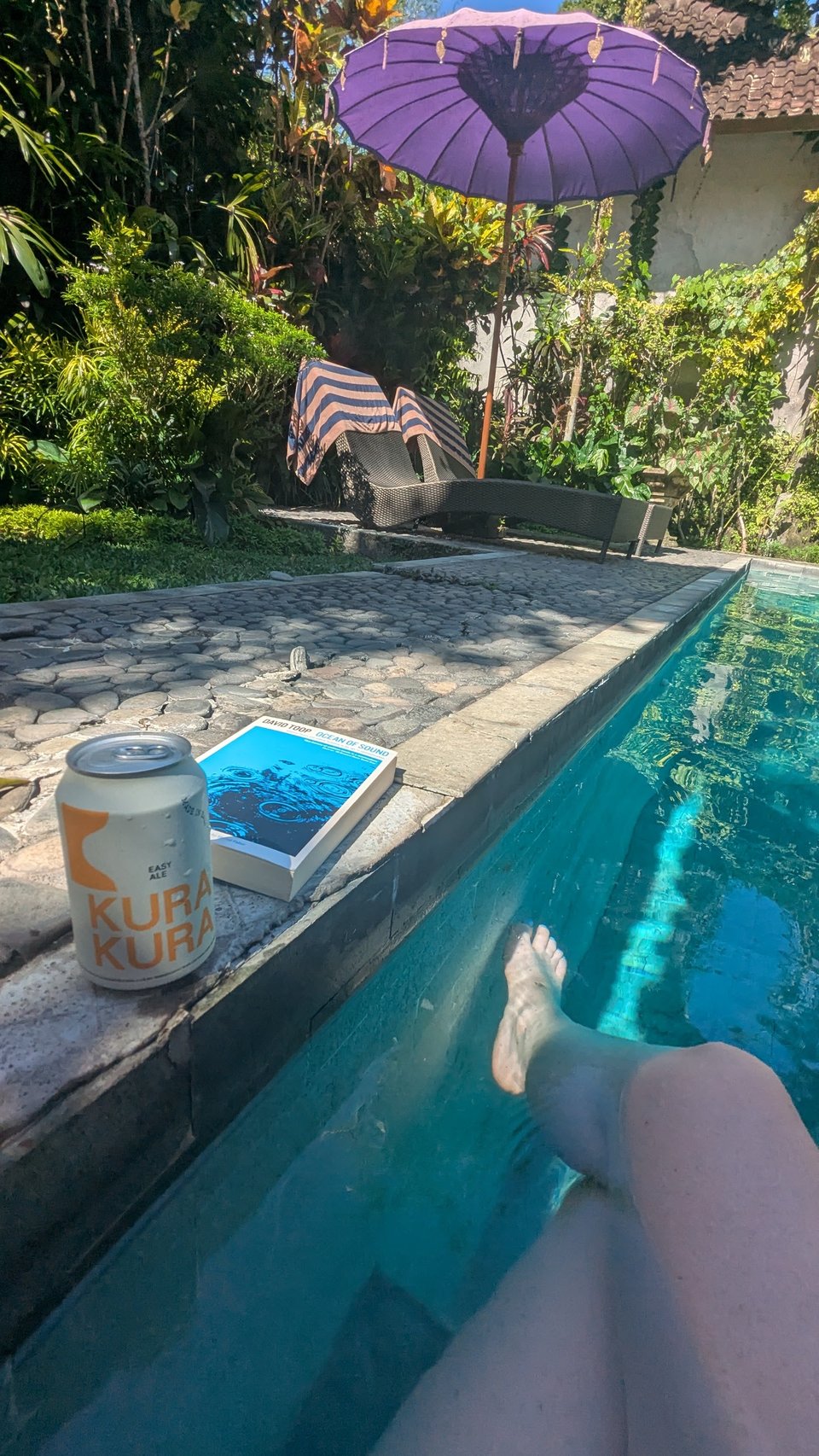
I promise I will make my next review shorter. Here are some other links, because humans recommend things better than AIs and algorithms do, and I hope you find something you enjoy here.
The Ghosts In The Machine by Liz Pelly, uncovering the AI artists being pushed in Spotify’s algorithmic playlists
OpenAI’s Studio Ghibli meme factory is an insult to art itself by Brian Merchant, on the newest offensive slop.
See also: Only Hayao Miyazaki Should Be Allowed to Turn People Into Pigs by Fran Hoepfner at Vulture.
And: Welcome to the semantic apocalypse by Erik Hoel
Conspiracy, the newest video essay by Contrapoints, is incredibly relevant to those of you living under a president that came to power largely due to Qanon, an anti-vaxxer conspiracy created over Covid.
The trailer for the new season of Andor.
The New Literalism Plaguing Today’s Biggest Movies by Namwali Serpell on how fucking boring it is to hear the plot explained to you.
Casual Viewing by Will Tavlin, the piece that pushed me over to killing all my streaming services by so clearly articulating how the slop factory works
Have Film and TV Lost Their Imagination? by Thomas Flight, exploring the impact of David Lynch (RIP) and the normalisation of media
Perfume Culture Is Starting To Stink on the weird impact TikTok is having on perfume
This Youtube video about hacking a knitting machine
The Mainstreaming of Loserdom by Tell the Bees on how the Youth have been convinced that it’s cool to stay at home doomscrolling
How to survive being online by Mike Monteiro over at his Good News (subscribe! He’s much better at this than I am) where he describes the simple joys of the radio
Don’t let machines or the crowd decide your world by Adam Singer on the importance of forming your taste outside of what’s fed to you
Clickens, a simple rating site where you consider two chickens against an adjective, from Erika Hall
If you dream you are having a dream… and the rest of the delightful newsletters from Betsy Streeter, a welcome palate-cleanser
AI: The New Aesthetics of Fascism by Gareth Walkins at The New Socialist on the non-coincidental popularity of AI art by the far right
The Zizians and the Rationalist death cults by Max Read – not sure what I can say to prepare you for this
Kristin has Doubts, one of my favourite episodes of Alex Goldman’s new podcast, Hyperfixed, about whether to have a child at the end of the world
2025 end times vibes, one of the playlists I put together while reading this book.
You just read issue #37 of Tiny Rebellions. You can also browse the full archives of this newsletter.

Add a comment: